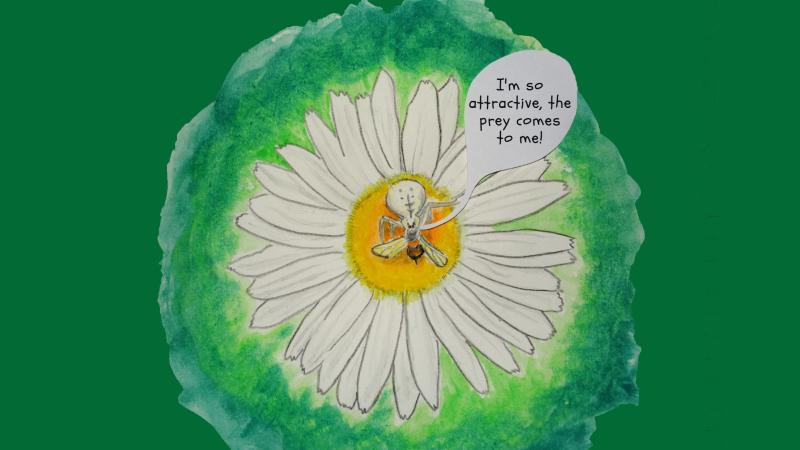
Crab spiders are a family of small, pretty spiders, some of which you could find in your own backyard or even on a potted plant. They are accomplished ambush hunters, making meals out of insects much larger than themselves – a crab spider half the size of your fingernail can easily grab a large butterfly. They are coloured to blend in remarkably with their surroundings, much like an octopus or a chameleon would. They perch on a hunting platform of their choice – usually the centre or base of a flower – and lie in waiting for their prey to venture close enough. Once they do, these spiders burst out of their surroundings to savour the treat.
But, is crypsis – the ability to stay hidden – a Crab spider’s secret weapon in its hunting games? Recent studies, contend that. In a 2011 study, researchers Ana Llandres and Miguel Rodríguez-Gironés conducted a series of experiments and pointed to some evidence that camouflage isn’t everything. In fact, it appears to play only a minor role, if any, in getting the prey close enough. In their experiments, the researchers showed that artificial model spiders, though camouflaged, did not perform as well as the real ones. Also, the prey frequently came within reach of the real spiders even when they stood out from their background.
Amazingly, it was found that the spiders, were not ‘hiding’ from their victims at all – they were actually reflecting UV light, making them contrast strongly against the background. This made them more visible to the honeybees used in the experiment who, interestingly, seemed to be lured closer. Large spiders that reflected more UV light seemed to be more successful at hunting. One of the major factors that did reduce their success was – unsurprisingly – any movement on their part that alerts the tricked bees!
So, what role does camouflage play? Only more research will tell, but it is possibly because the crab spiders want to stay hidden from other eyes – those of their predators.





